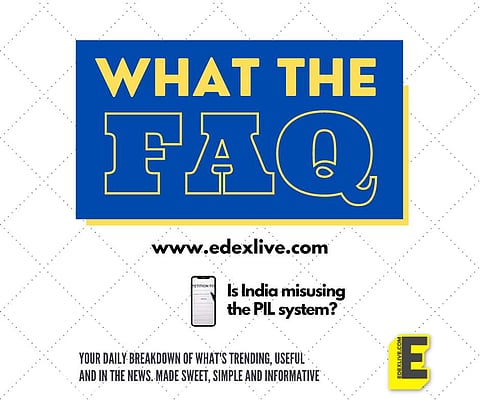

The Allahabad High Court this week said that a mockery of the Public Interest Litigation (PIL) system was being made by a petitioner who demanded that 22 locked rooms of the Taj Mahal be opened in order to check if they were hiding Hindu idols.
We take a look at the use and misuse of PILs over the years.
What is a PIL?
A Public Interest Litigation (PIL) is a complaint filed in a court of law by a party that is not directly affected by the defendant. The litigation is filed in order to bring a matter of public interest to the court's notice. It was introduced by Justice PN Bhagwati after the Emergency era in the early 1980s to make it easier for the public to approach the courts since the process is not as arduous as filing a regular petition.
What were the landmark laws passed through PILs?
The PIL system is largely responsible for the courts recognising sexual harassment as a violation under the Constitution, after the case of Bhanwari Devi who was raped by five men for stopping a child marriage in Rajasthan. The PIL was filed under five NGOs to recognise and challenge sexual harassment in the workplace after Devi was raped, and the perpetrators were not brought to justice.
In 1988, the court passed orders against industries and tanneries along the banks of River Ganga for pollution. Hundreds of such industries were then forced to take measures such as setting up sewage treatment plants.
Are PILs being misused?
The recent example of the PIL filed to demand that locked rooms in the Taj Mahal be opened adds to the list of frivolous PILs that have been filed over the years by the public. While some misuse it for publicity, others have filed petitions for monetary gains. In 2020, a PIL was filed against the Delhi Development Authority raising objections over the clearances given to the Central Vista project and requesting the court to intervene in the matter. The Supreme Court said that this was a misuse of the PIL system and that the court cannot be asked to interfere in matters of everyday governance.
What steps has the judiciary taken to reduce the probability of misuse of PILs?
In March 2017, the Supreme Court said that fines will be imposed on those who introduce "frivolous" petitions that "choke the litigation system". A fine of Rs 5 lakh was imposed on one tenant who filed a PIL to delay the Bombay High Court's order for him to vacate the property.
Chief Justice NV Ramana in April this year said that the PIL was being widely misused and gave it the moniker of "personal litigation system."
